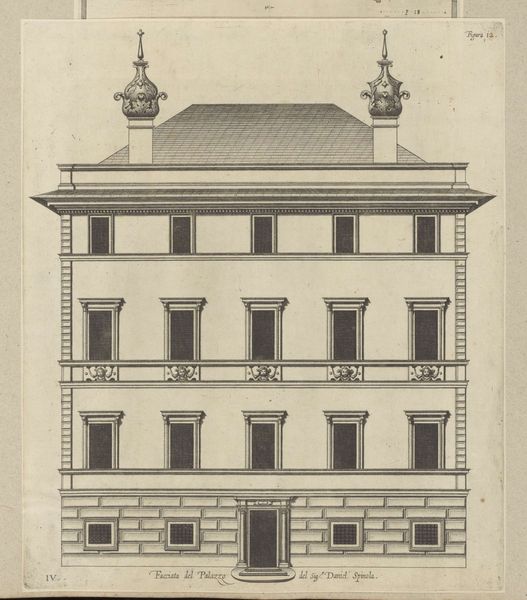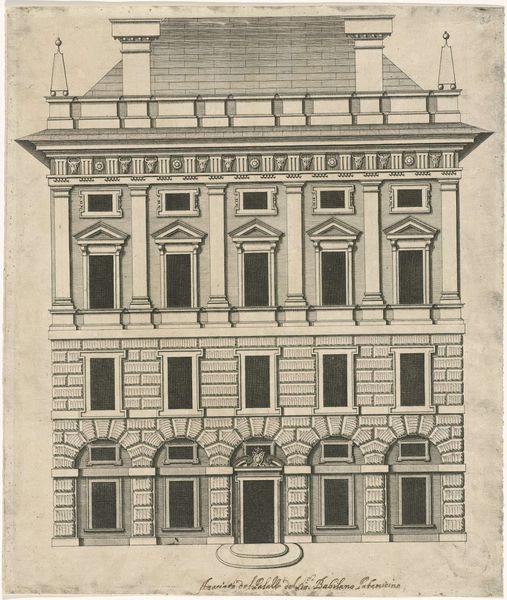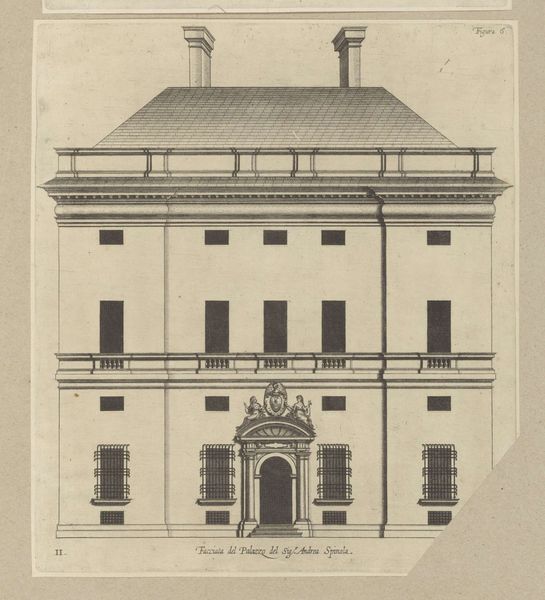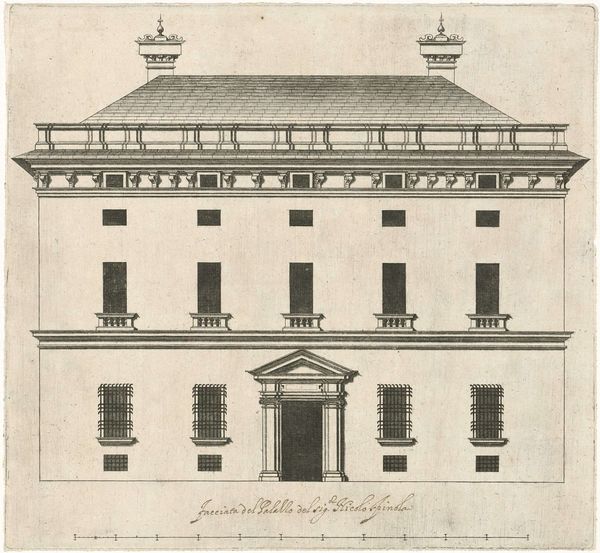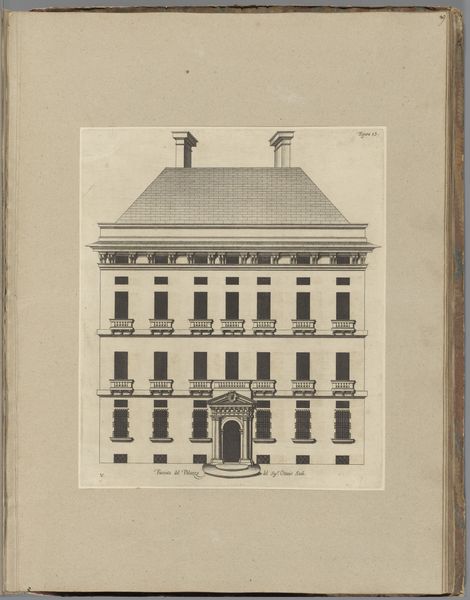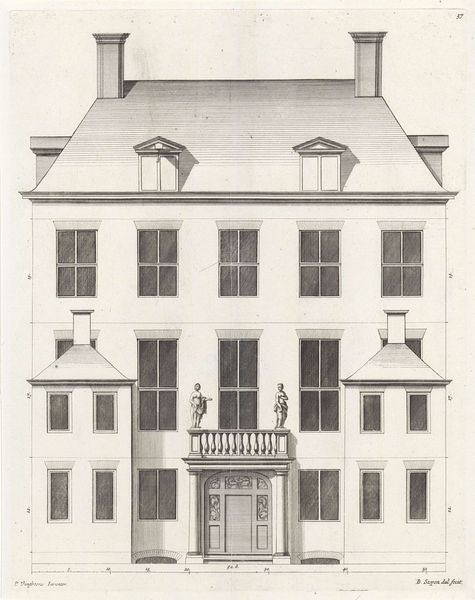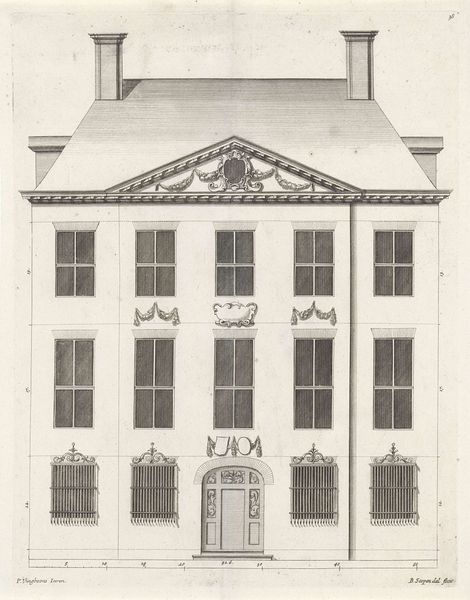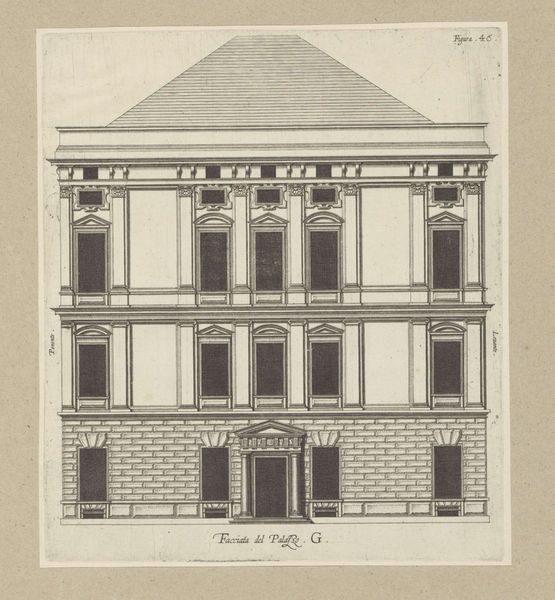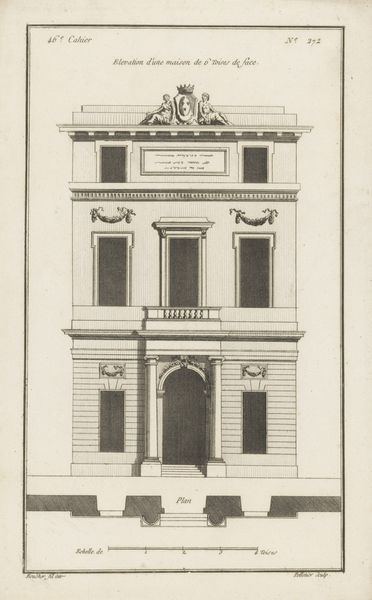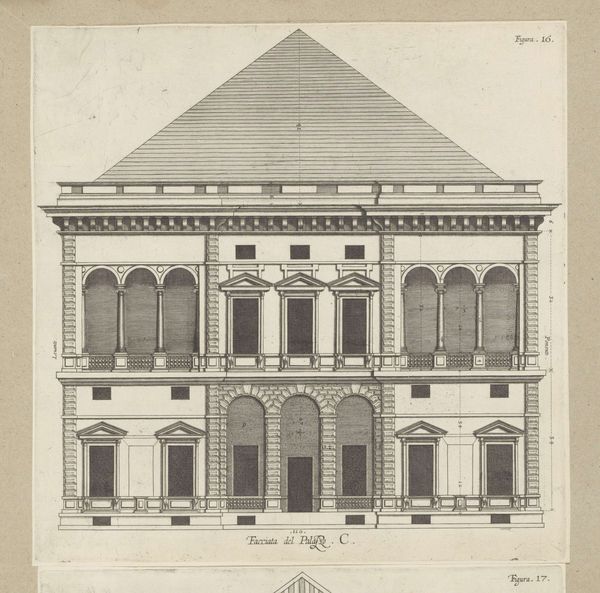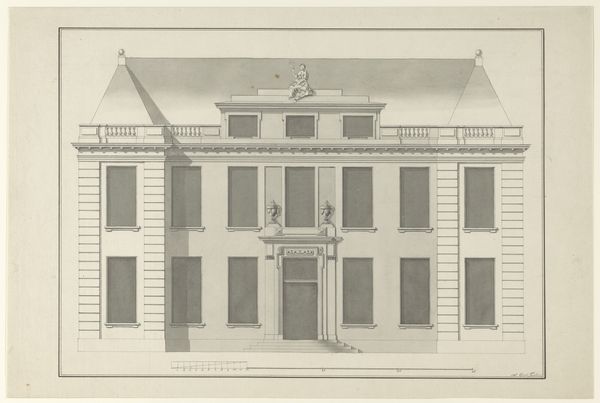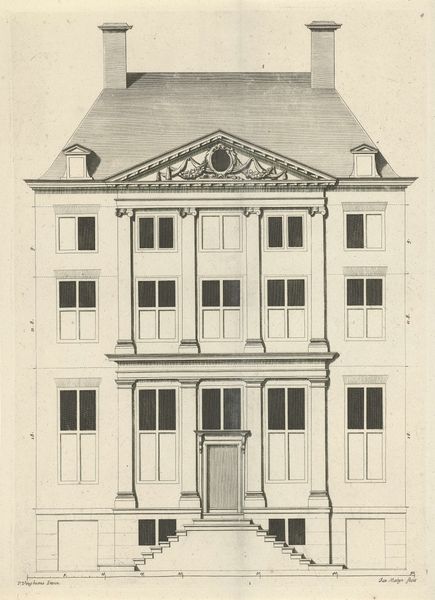
Opstand van de façade van het Palazzo Balbi-Senarega te Genua 1622
0:00
0:00
drawing, engraving, architecture
#
drawing
#
baroque
#
cityscape
#
engraving
#
architecture
#
building
Dimensions: height 337 mm, width 290 mm, height 583 mm, width 435 mm
Copyright: Rijks Museum: Open Domain
Curator: Standing before us is a 1622 engraving titled "Opstand van de façade van het Palazzo Balbi-Senarega te Genua," by Nicolaes Ryckmans. Editor: The building looms rather ominously, almost oppressively so with its repetitive window patterns. I can only imagine how cold it would feel inside. Curator: What strikes me about this cityscape portrayal is its engagement with the Baroque style, a departure from preceding Renaissance ideals. The symmetry suggests classical influences, but what does this structure communicate about Genoa's social fabric? Editor: The engraving medium itself speaks volumes. The act of reproduction, of disseminating images of power, made this architecture available for aspiration and consumption, even by those who could never occupy such a palazzo. What kind of labour would it take to source, prepare and cut those slabs of stone? Curator: Absolutely, and let’s consider where drawings such as this were kept. Architectural drawings were not necessarily presentation pieces, often more working designs that allowed access for only a restricted group of craftsmen, city planners or the commissioning families themselves. How much access did this give people to new approaches? Editor: The scale, though depicted in two dimensions, conveys wealth and influence. The repetitive pattern of the windows perhaps speaks to the automation of building processes—even in the 17th Century! This print provides insight to the commodification of architectural ambition itself. Curator: And this building embodies the aspirations of Genoa's elite class. One of Italy’s powerful banking families commissioned its design, demonstrating a keen awareness of leveraging imagery to establish their influence. Editor: So, it's about solidifying the place of the commissioner by spreading images of their creation to solidify place within the historical imagination. Fascinating! Curator: Yes, reflecting upon both materiality and political function truly underscores the lasting legacy embedded in this drawing.
Comments
No comments
Be the first to comment and join the conversation on the ultimate creative platform.
